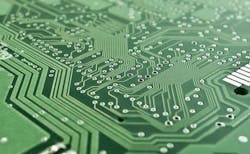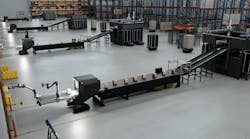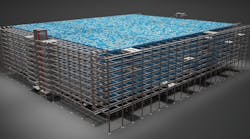The IR sensor is a crucial component in many everyday products, ranging from medical equipment to mobile phones. However, the technology is 50 years old and is in serious need of an upgrade. The next generation IR sensor 2.0 for IoT will be much thinner than old sensors and cheaper to manufacture.
Today's manufacturing industry is highly dependent on sensors. Whether it is heavy industrial products or smaller consumer products – they are all more or less dependent on well-functioning sensors that control levels, presence, temperatures, and pressures. Even in medical technology, sensors are used, for example, to measure EEG and ECG.
The extensive spread of the IR sensor began in the 1950’s when industries expanded in size and gained a greater degree of automation. In this process, the sensor came to play a major role in the development of the manufacturing industry, and so it does still today with the same principle.
Simply described, the sensor is required when you need to record and compile the detection and communication of a particular event. And, as mentioned earlier, the applications are numerous. A sensor designed to trigger alarms is often called the detector, and is usually activated when exceeding limit values, such as high temperature or low pressure. Other types of sensors are photodiodes, cameras, microphones, radar, sonar, and pressure sensors.
The new IR sensor 2.0 will bridge the analogue and digital in an increasingly connected world
In the connected world that is now emerging, I believe that the IR sensor has the potential to become the bridge between the analogue and the digital world. And the digitally connected world is growing strongly. Therefore, it is not a bold assumption, that in the near future everything that can be linked up, will be connected.
Security and reliability are of course important components in such a process, but if there is a demand and customer benefit in place, it will most likely happen. And as stated earlier, the development is very fast. Only ten years ago, there were very few who could predict how many services would move into smart phones and other consumer electronics. And now there is also a similar development in the area of Internet of Things, where the actual sensors can play an important role.
Small thermopile sensors that measure heat flow open up for new areas of use
The thermopile is a series of series-connected thermo couples that can convert thermal energy into electrical energy. With the help of the new generation of IR sensors, it can also be used for contactless measurement of temperature and heat flow, as well as presence detection.
Thanks to new technology, where the thermocouple's lead structure is based on nanotechnology, they are more easily mass produced. The advantage of the vertical arrangement of thermocouple conductors – perpendicular to the plan configuration – is that the hot and cold bonds are separated by the substrate thickness, which is also why the structure becomes more robust compared to the very thin silicon membrane of conventional thermostatic sensors.
Robust, power-efficient, easy, and inexpensive to produce
The vertical architecture of IR sensor 2.0 makes it possible to manufacture the sensors out of flexible plastic, instead of fragile ceramics or silicon, which is used in most other IR sensors on the market. The plastic matrix containing the nano-threads makes the sensor very robust and can be moulded according to the customer's wishes. In addition, the sensor can be touched and also used as a (haptic) pushbutton.
The low energy consumption is another important feature; The total cost of a sensor can be divided into three subcategories: raw materials, production, and integration. The raw materials or material bill represents a lower limit for the sensor's cost. No matter how efficient the production is or how many sensors are produced, the cost per sensor will not be lower than the cost of the raw materials from which the sensor is made.
In addition to raw materials, the sensor must be manufactured and integrated into the buyer's hardware. Given that these sensors are developed for mass production using conventional circuit board technology, the cost of producing the sensor is low compared with conventional IR sensors. I expect the production cost of a sensor could be up to 1/10 per unit in large volumes, compared to a conventional sensor. Today we stand on the threshold of ushering in IR sensor 2.0; the necessary research and development is done and the concept is proven. All that remains is for the market to detect this new generation's sensor.
In a connected world flooding with data, there will be many opportunities to achieve a safer, more environmentally friendly and a more sustainable society. But to achieve this, it is also important to use the right technology. In such a world, it is time for an IR sensor 2.0.
About the author
Robert Ekström is CEO of Swedish IR sensor producer JonDeTech. He has held leading positions in the global IT industry for the last 20 years, including as head of EMC in Sweden and companies such as Servicenow, Fujitsu, Dell, and Xerox. In spring 2018 he led Swedish IR sensor manufacturer JonDeTech's introduction to Nasdaq First North Stockholm.





